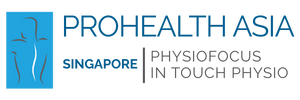The Science of Stretch: How Myofascial Release Helps You Move and Feel Better
If you’ve ever felt tight or stiff, the root cause might not be your muscles, but a deeper, body-wide network of connective tissue called fascia. When fascia becomes tight or restricted, it can lead to chronic pain, limited mobility, and poor posture.
At Prohealth In Touch Physio, we use myofascial release (MFR), a gentle and targeted technique, to address these issues and help you reclaim a life of effortless movement.
What Is Fascia?
Think of fascia as a flexible, web-like bodysuit that surrounds every muscle, bone, nerve, and organ. In a healthy state, fascia is smooth and pliable, allowing everything to move together fluidly. However, due to injury, overuse, poor posture, or stress, fascia can lose its flexibility, leading to tension and pain. Because fascia is an interconnected system, tension in one area—like a tight hip—can cause referred pain elsewhere, such as in the lower back
The Power of Myofascial Release
Myofascial release is a hands-on manual therapy that targets the fascial system. Unlike traditional massage, which focuses on muscles, MFR applies slow, sustained pressure to fascial restrictions. This patient, precise approach helps the fascia "release," allowing it to return to a more flexible and functional state.
Benefits of Myofascial Release
Many people experience significant relief after just a few sessions. The benefits of MFR include:
Chronic Pain Relief: MFR is particularly effective for stubborn conditions like neck or back pain, fibromyalgia, tension headaches, and plantar fasciitis.
Improved Mobility: By releasing fascial restrictions, MFR helps you move with greater ease and less effort.
Faster Injury Recovery: The technique can reduce scar tissue buildup and support better healing after surgery or injury.
Better Posture: Releasing fascial tension can help realign the body, reducing strain on joints and muscles.
Myofascial Release vs. Stretching
While traditional stretching targets muscles, MFR works on the connective tissue that often acts as the true barrier to movement. By first releasing fascial adhesions with MFR, your stretches and strengthening exercises become more effective and lead to longer-lasting results.
What to Expect and How You Can Help
During a session, your physiotherapist will assess your body to identify areas of fascial restriction. Using gentle, hands-on pressure without lotions, they will help your body unwind. You may also receive a personalized plan that includes self-myofascial release techniques using tools like a foam roller, allowing you to maintain progress and prevent flare-ups at home.
If you are dealing with chronic tightness, limited flexibility, or pain that hasn't responded to other treatments, myofascial release might be the key to unlocking your body's full potential.

